|
 |
 Автор: Williams Автор: Williams
 Дата: 11 апреля 2020 Дата: 11 апреля 2020
 Просмотров: 3 083 Просмотров: 3 083 |
| |
Ram S. Gupta - Principles of Structural Design. Wood, Steel, and Concrete. Third Edition
CRC Press, 2020
pdf, 619 pages, english
ISBN-13: 978-1-138-49353-7
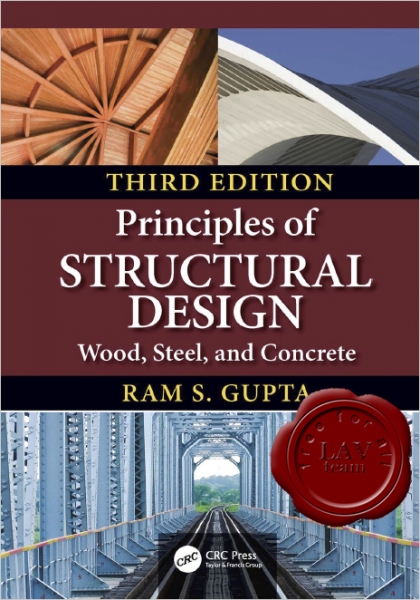
Timber, steel, and concrete are common engineering materials used in structural design. Material choice depends upon the type of structure, availability of material, and the preference of the designer. The design practices the code requirements of each material are very different. In this updated edition, the elemental designs of individual components of each material are presented, together with theory of structures essential for the design. Numerous examples of complete structural designs have been included. A comprehensive database comprising materials properties, section properties, specifications, and design aids, has been included to make this essential reading. |
| |
 Читать статью дальше (комментариев - 13)
Читать статью дальше (комментариев - 13)
| |
|
 |
 Автор: Williams Автор: Williams
 Дата: 9 апреля 2020 Дата: 9 апреля 2020
 Просмотров: 3 201 Просмотров: 3 201 |
| |
Srinivasan Chandrasekaran - Advanced Steel Design of Structures
AISC 358-20s2 - Prequalified Connections for Special and Intermediate Steel Moment Frames for Seismic Applications
CRC Press, 2020
pdf, 303 pages, english
ISBN-13: 978-0-367-23290-0
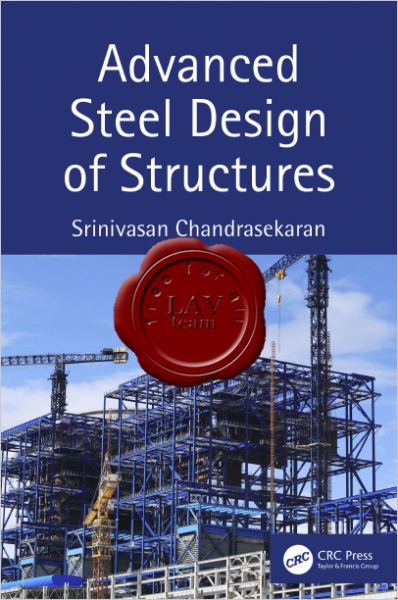
Advanced Steel Design of Structures examines the design principles of steel members under special loads and covers special geometric forms and conditions not typically presented in standard design books. It explains advanced concepts in a simple manner using numerous illustrative examples and MATLAB codes.
Features:
- Provides analysis of members under unsymmetrical bending
- Includes coverage of structures with special geometry and their use in offshore applications for ultra-deep water oil and gas exploration
- Presents numerical modeling and analysis of steel members under fire conditions, impact, and blast loads
- Includes MATLAB examples that will aid in the capacity building of civil engineering students approaching this complex subject
Written for a broad audience, the presentation of design concepts of steel members will be suitable for upper-level undergraduate students. The advanced design theories for offshore structures under special loads will be an attractive feature for post-graduate students and researchers. Practicing engineers will also find the book useful, as it includes numerous solved examples and practical tutorials. |
| |
 Читать статью дальше (комментариев - 13)
Читать статью дальше (комментариев - 13)
| |
|
 |
 Автор: Williams Автор: Williams
 Дата: 8 апреля 2020 Дата: 8 апреля 2020
 Просмотров: 1 946 Просмотров: 1 946 |
| |
Aiqun Li - Vibration Control for Building Structures, Theory and Applications
Springer, 2020
pdf, 677 pages, english
ISBN 978-3-030-40789-6
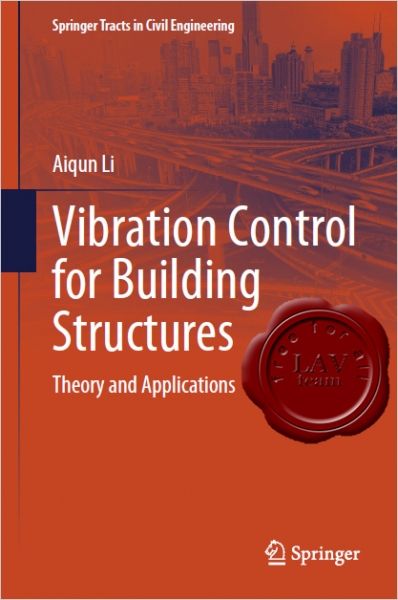
This book presents a comprehensive introduction to the field of structural vibration reduction control, but may also be used as a reference source for more advanced topics. The content is divided into four main parts: the basic principles of structural vibration reduction control, structural vibration reduction devices, structural vibration reduction design methods, and structural vibration reduction engineering practices. As the book strikes a balance between theoretical and practical aspects, it will appeal to researchers and practicing engineers alike, as well as graduate students. |
| |
 Читать статью дальше (комментариев - 12)
Читать статью дальше (комментариев - 12)
| |
|
 |
 Автор: Williams Автор: Williams
 Дата: 4 апреля 2020 Дата: 4 апреля 2020
 Просмотров: 2 832 Просмотров: 2 832 |
| |
Anil K. Chopra - Dynamics of Structures, Theory and Applications to Earthquake Engineering
Fifth Edition in SI Units
Pearson, 2020
pdf, 994 pages, english
ISBN-10: 1-29-224918-8
ISBN-13: 978-1-29-224918-6
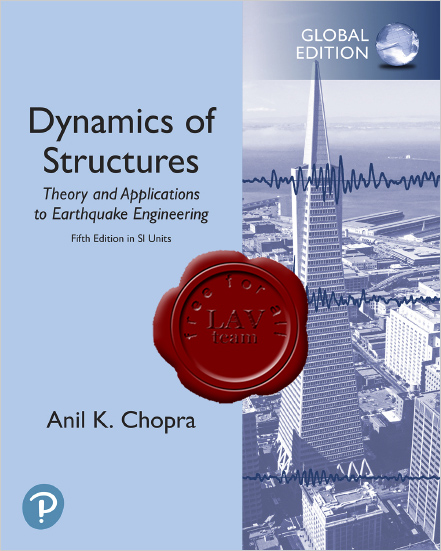
An expert on structural dynamics and earthquake engineering, Anil K. Chopra fills an important niche, explaining the material in a manner suitable for both students and professional engineers with his fifth edition, in SI units of Dynamics of Structures: Theory and Applications to Earthquake Engineering. No prior knowledge of structural dynamics is assumed, and the presentation is detailed and integrated enough to make the text suitable for self-study.
As a textbook on vibrations and structural dynamics, this book has no competition. The material includes many topics in the theory of structural dynamics, along with applications of this theory to earthquake analysis, response, design, and evaluation of structures, with an emphasis on presenting this often difficult subject in as simple a manner as possible through numerous worked-out illustrative examples. The fifth edition, in SI Edition includes new sections, figures, and examples, along with relevant updates and revisions.
New to this Edition. Updates, Improvements, and Expanded Sections in the fifth edition, in SI units.
- Two new sections have been added to Chapter 20, which is now more than twice its previous size. These additions were motivated by the increasing use of nonlinear response history analyses (RHAs) of buildings in professional practice.
- Individual chapter updates and revisions include:
--- Chapter 13 has been extended to include a response-spectrum-based method to estimate principal stresses in continuum structures, such as concrete dams.
--- Chapters 7, 9, and 18 have been expanded to include P—analysis of gravity load effects and an introduction to their influence on the lateral response, permanent deformation, and collapse of structures.
--- Chapter 11 has been revised to include recent data on damping ratios determined by system-identification analysis of motions of 203 buildings recorded during earthquakes. New recommendations for estimating damping ratios to be used in earthquake analysis of structures are presented.
--- Chapters 22 and 23 have been updated to reflect the current editions of building codes for designing new buildings, and of performance-based guidelines and standards for evaluating existing buildings.
- Many new figures, several worked-out examples, and end-of-chapter problems have been added. |
| |
 Читать статью дальше (комментариев - 21)
Читать статью дальше (комментариев - 21)
| |
|
 |
 Автор: Williams Автор: Williams
 Дата: 7 марта 2020 Дата: 7 марта 2020
 Просмотров: 1 222 Просмотров: 1 222 |
| |
Yunus A. Cengel - Heat and Mass Transfer. Fundamental and Application. 2nd Edition.
2002 year
pdf, 1300 pages, english
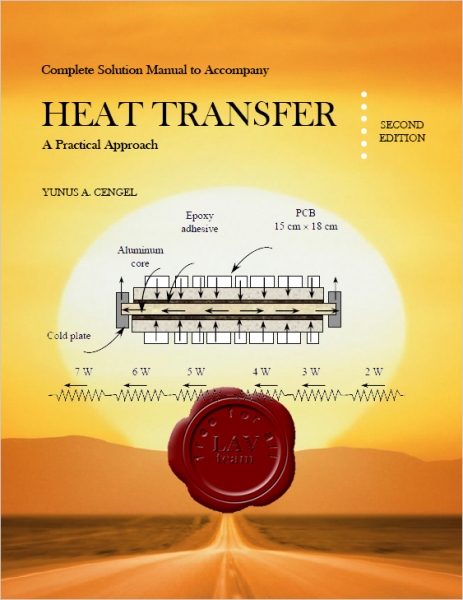
This manual is prepared as an aide to the instructors in correcting homework assignments, but it can also be used as a source of additional example problems for use in the classroom. With this in mind, all solutions are prepared in full detail in a systematic manner, using a word processor with an equation editor. The solutions are structured into the following sections to make it easy to locate information and to follow the solution procedure, as appropriate:
- Solution - The problem is posed, and the quantities to be found are stated.
- Assumptions - The significant assumptions in solving the problem are stated.
- Properties - The material properties needed to solve the problem are listed.
- Analysis - The problem is solved in a systematic manner, showing all steps.
- Discussion - Comments are made on the results, as appropriate.
|
| |
 Читать статью дальше (комментариев - 17)
Читать статью дальше (комментариев - 17)
| |
|
 |
 Автор: Williams Автор: Williams
 Дата: 17 января 2020 Дата: 17 января 2020
 Просмотров: 1 191 Просмотров: 1 191 |
| |
Schlumberger, 1972 - The essentials of log interpretation practice
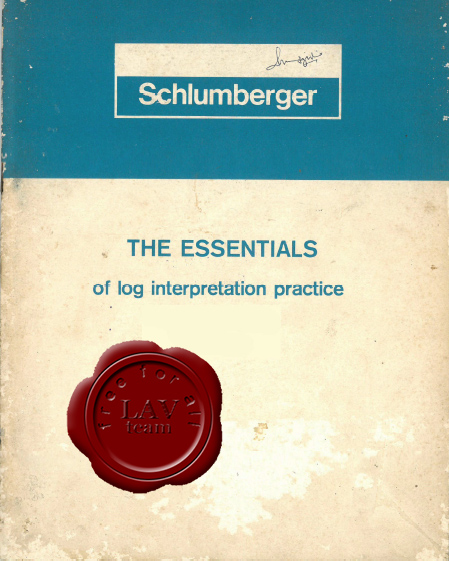
On exploration wells, after the logs have been made, some quick answers are needed: what formations are potential hydrocarbon producers? Will it be gas or oil? Approximate volumetric evaluation? In the case of development wells, the main interest usually is for an accurate evaluation of the volume of hydrocarbons.
In some cases the logs provide obvious answers to this type of question. More often. a study of the logs is needed; it can be a 'quick look' interpretation when rapid answers are needed; it can be a detailed analysis, 'manual' or computer-processed, when an accurate quantitative evaluation is required. In all cases log interpretation requires a good knowledge of the behaviour of the logging tools and of their limitations.
Description of the logging tools is given in this book. |
| |
 Читать статью дальше (комментариев - 8)
Читать статью дальше (комментариев - 8)
| |
|
 |
 Автор: Williams Автор: Williams
 Дата: 10 января 2020 Дата: 10 января 2020
 Просмотров: 3 332 Просмотров: 3 332 |
| |
T.H.G. Megson - Structural and Stress Analysis, Fourth Edition
Butterworth-Heinemann, 2019
pdf, 1270 pages, english
ISBN: 978-0-08-102586-4
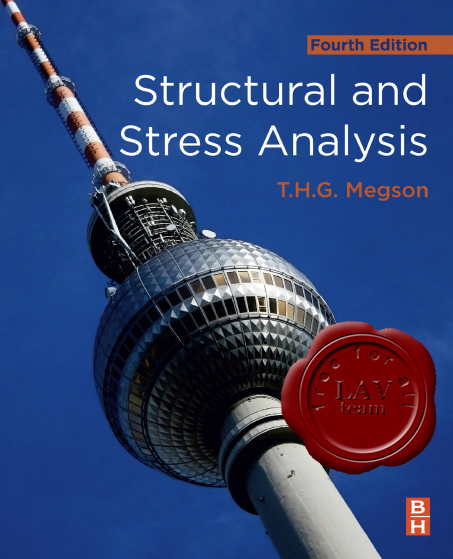
Structural and Stress Analysis, Fourth Edition, provides readers with a comprehensive introduction to all types of structural and stress analysis. Starting with an explanation of the basic principles of statics, the book then covers normal and shear force, bending moments, and torsion. Building on the success of prior editions, this update features new material on structural dynamics and fatigue, along with additional discussions of Eurocode compliance in the design of beams. With worked examples, practice problems, and extensive illustrations, it is an all-in-one resource for students and professionals interested in learning structural analysis.
Key Features:
- Presents a comprehensive overview of structural and stress analysis
- Includes numerous worked examples and end-of-chapter problems
- Extensively illustrated to help visualize concepts
- Contains a greater focus on digital trends in structural engineering, including newer computer analysis methods and how to check output of such methods to avoid ‘black-box’ engineering
- Contains additional worked examples on plastic analysis of frames, bending moment distribution and displacement evaluations on collapse mechanics
- Introduces content on statics to ensure that students know the basic concepts and can understand the equilibrium principles that govern all structures as well as the principles of the mechanisms involved in computer-based calculations.
|
| |
 Читать статью дальше (комментариев - 16)
Читать статью дальше (комментариев - 16)
| |
|
 |
 Автор: Williams Автор: Williams
 Дата: 6 января 2020 Дата: 6 января 2020
 Просмотров: 4 105 Просмотров: 4 105 |
| |
LYNDA.com: Irene Radcliffe - Learning Faro As-Built for AutoCAD
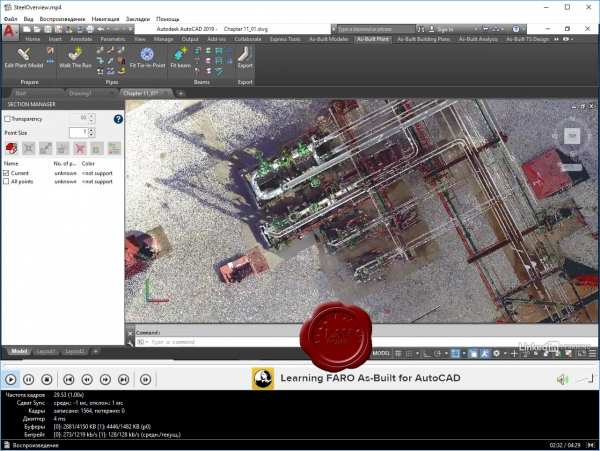
Today's clients demand a level of accuracy that's difficult to reach with traditional measuring tools. FARO As-Built allows you to leverage scan data to extract piping, structural steel, and building details in AutoCAD. In this course, you can learn how to work with FARO As-Built, from configuring your project and scan data to sectioning and slicing and digitizing your scan. You can also get familiar with the drawing tools available and learn how to use VirtuSurv, the FARO software for producing more realistic and intuitive views of scan data. Instructor Irene Radcliffe also shows how to apply your skills to model piping, steel structures, and floor plans. Once you complete the training, you should be able to model everything from utility rooms to complex plant facilities using FARO As-Built.
Topics include:
- Importing ReCap data
- Creating a VirtuSurv project
- Setting point-cloud parameters
- Loading specs for pattern recognition
- Creating and saving sections and slices
- Viewing points with the Scan Navigation feature
- Fitting linework and shapes to point-cloud data
- Editing drawing data
- Analyzing drawing data
- Sending coordinates to AutoCAD with VirtuSurv
- Modeling objects with VirtuSurv macros
- Processes for piping and steel beams
- Creating floor plans with the As-Built building tools
|
| |
 Читать статью дальше (комментариев - 7)
Читать статью дальше (комментариев - 7)
| |
|
 |
| ПОИСК ПО САЙТУ |
 |
|
 |
| КАЛЕНДАРЬ | | |
 |
| « Октябрь 2025 » |
|---|
| Пн | Вт | Ср | Чт | Пт | Сб | Вс |
|---|
| | 1 | 2 | 3 | 4 | 5 | | 6 | 7 | 8 | 9 | 10 | 11 | 12 | | 13 | 14 | 15 | 16 | 17 | 18 | 19 | | 20 | 21 | 22 | 23 | 24 | 25 | 26 | | 27 | 28 | 29 | 30 | 31 | |
|
 | |
| |
|